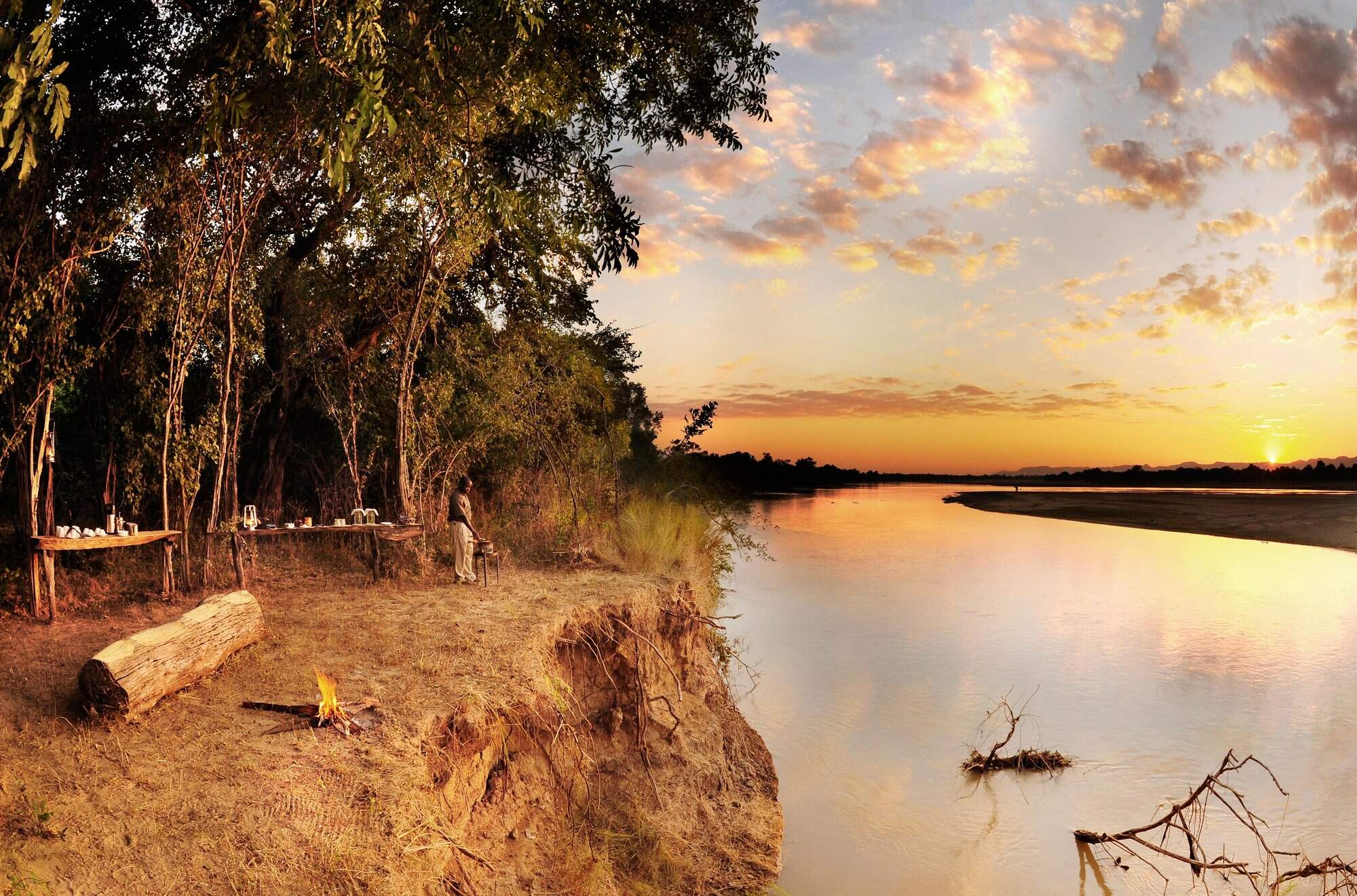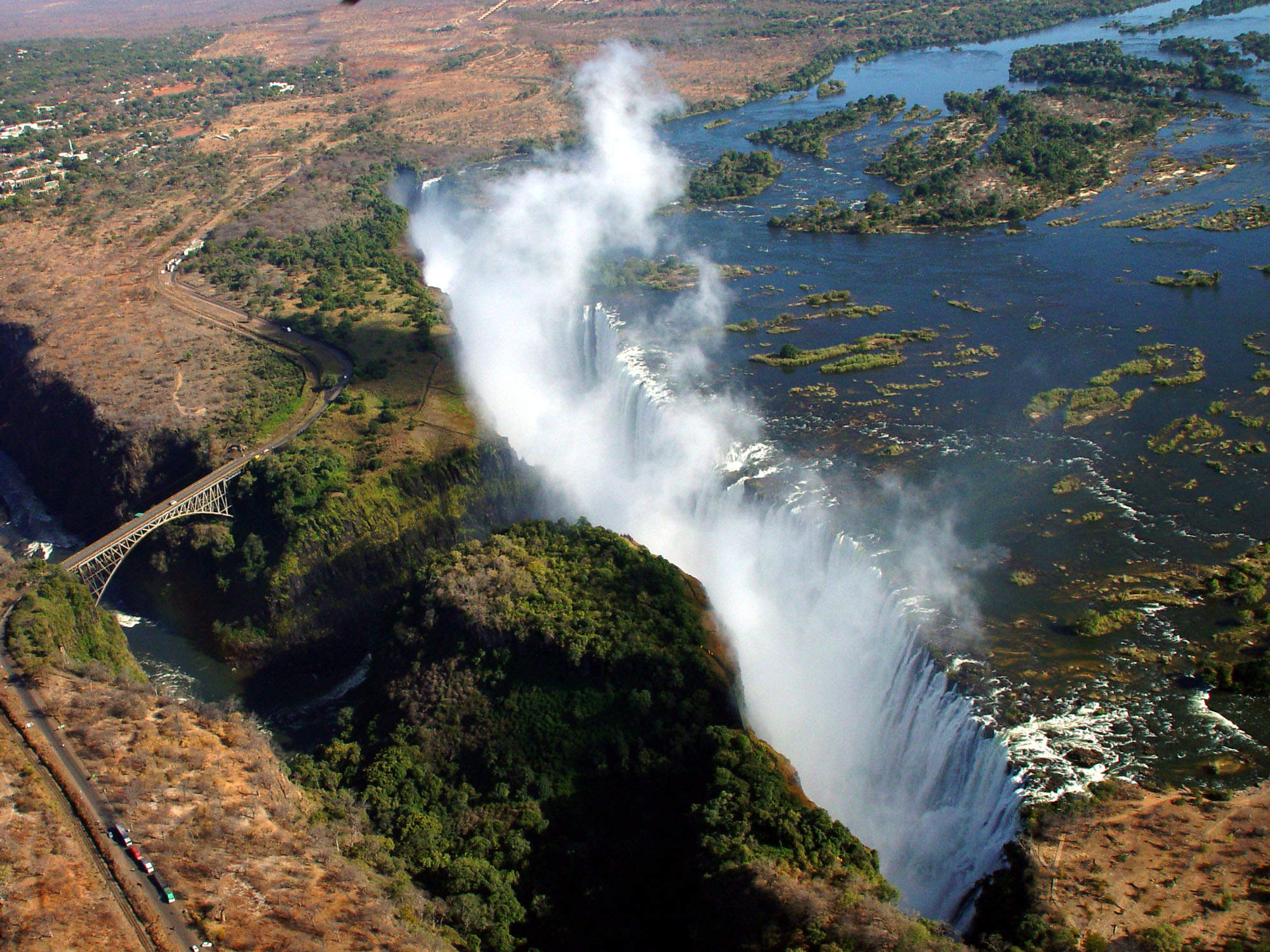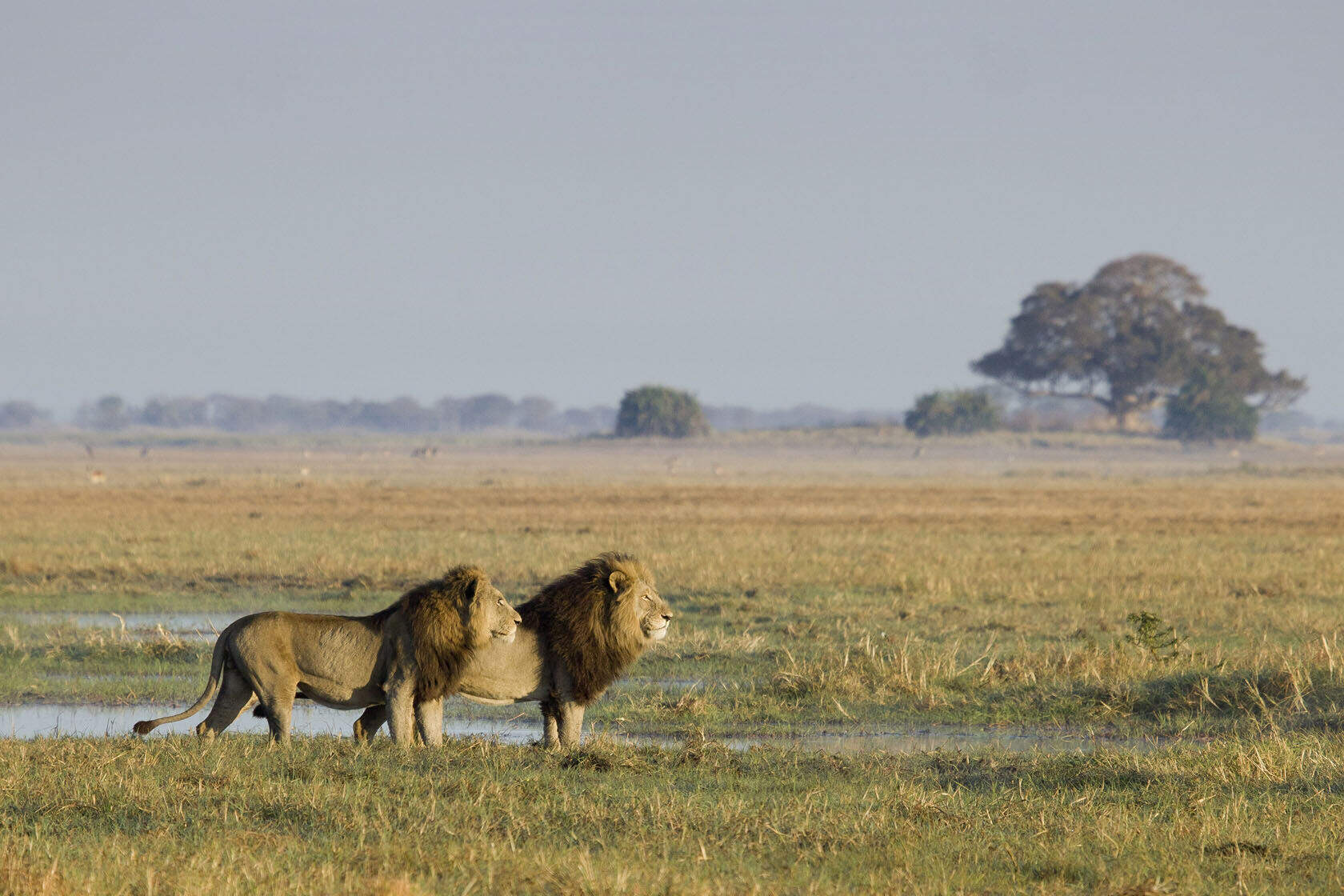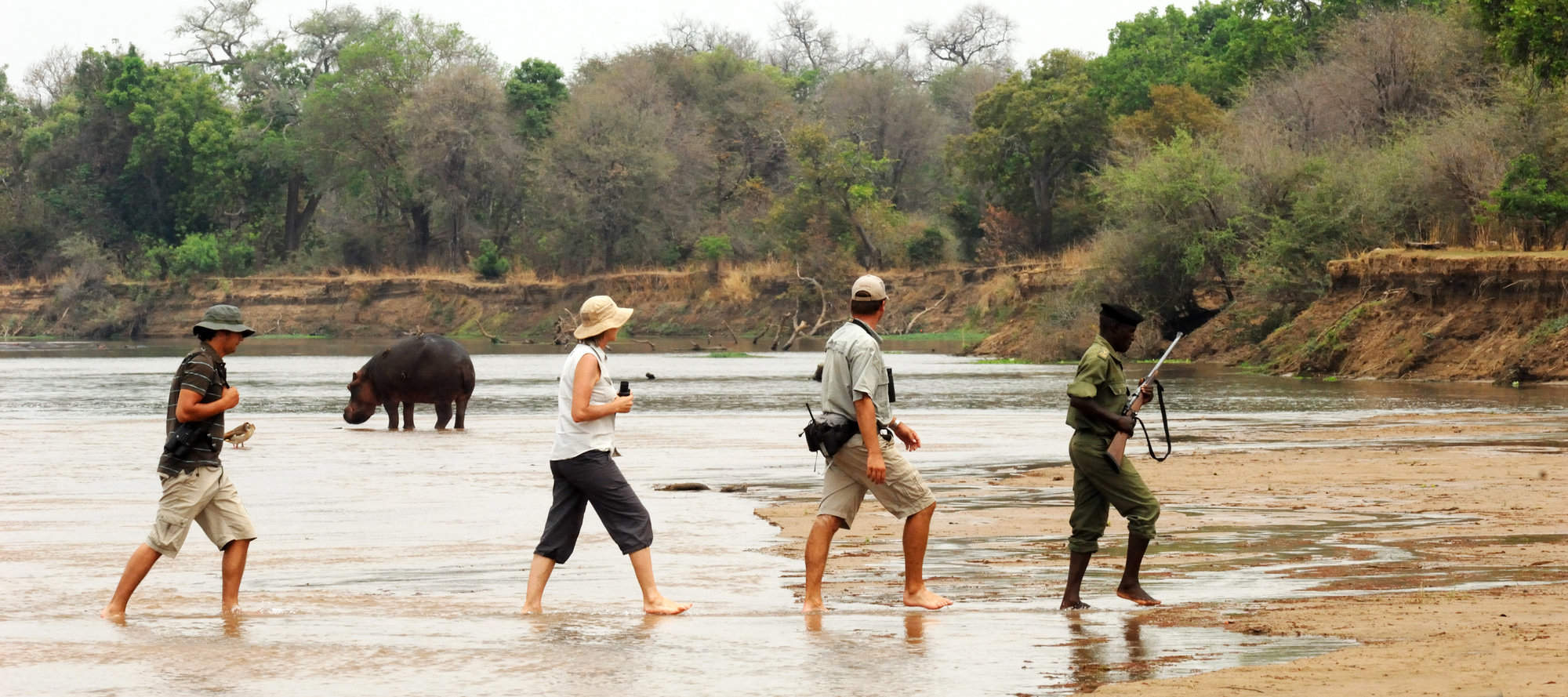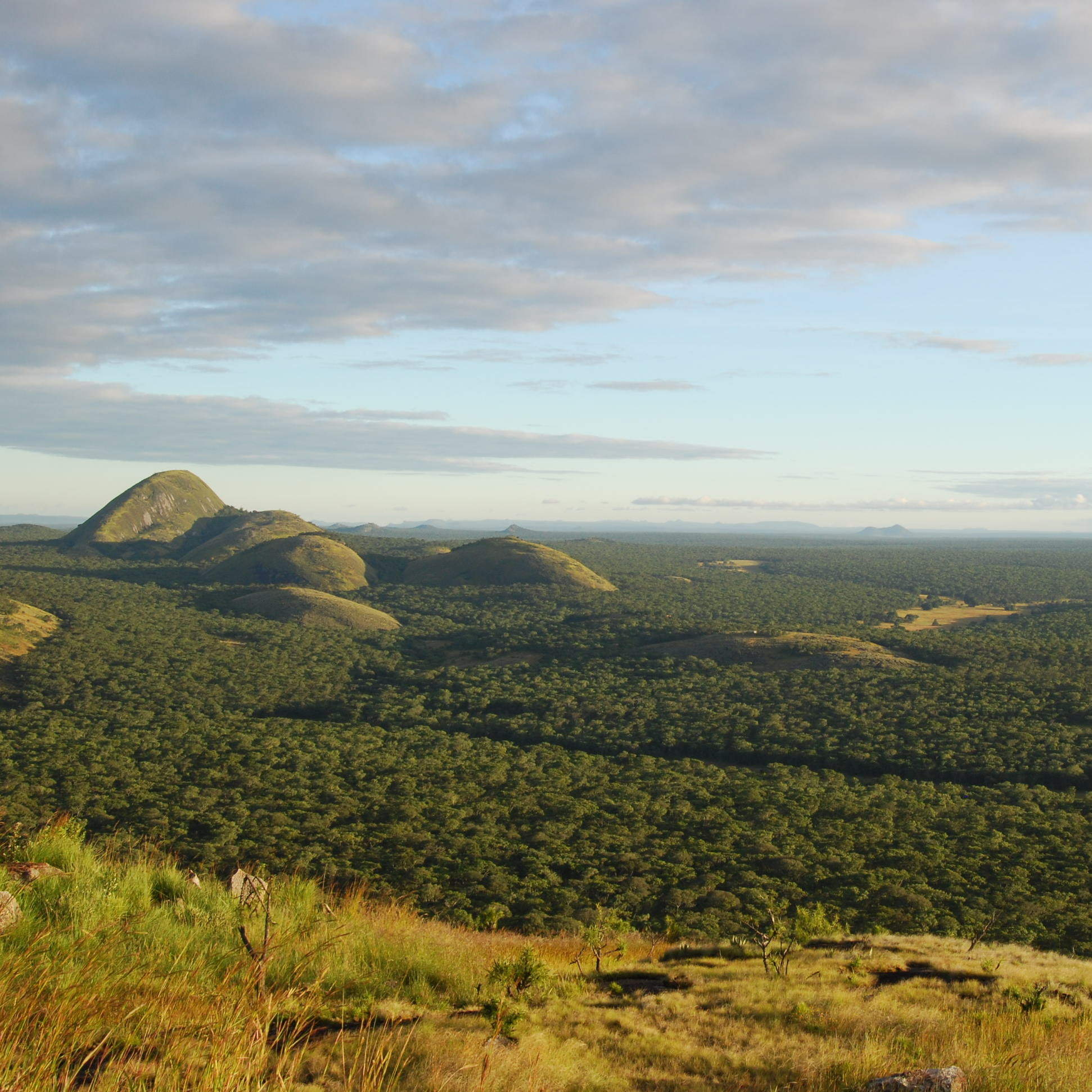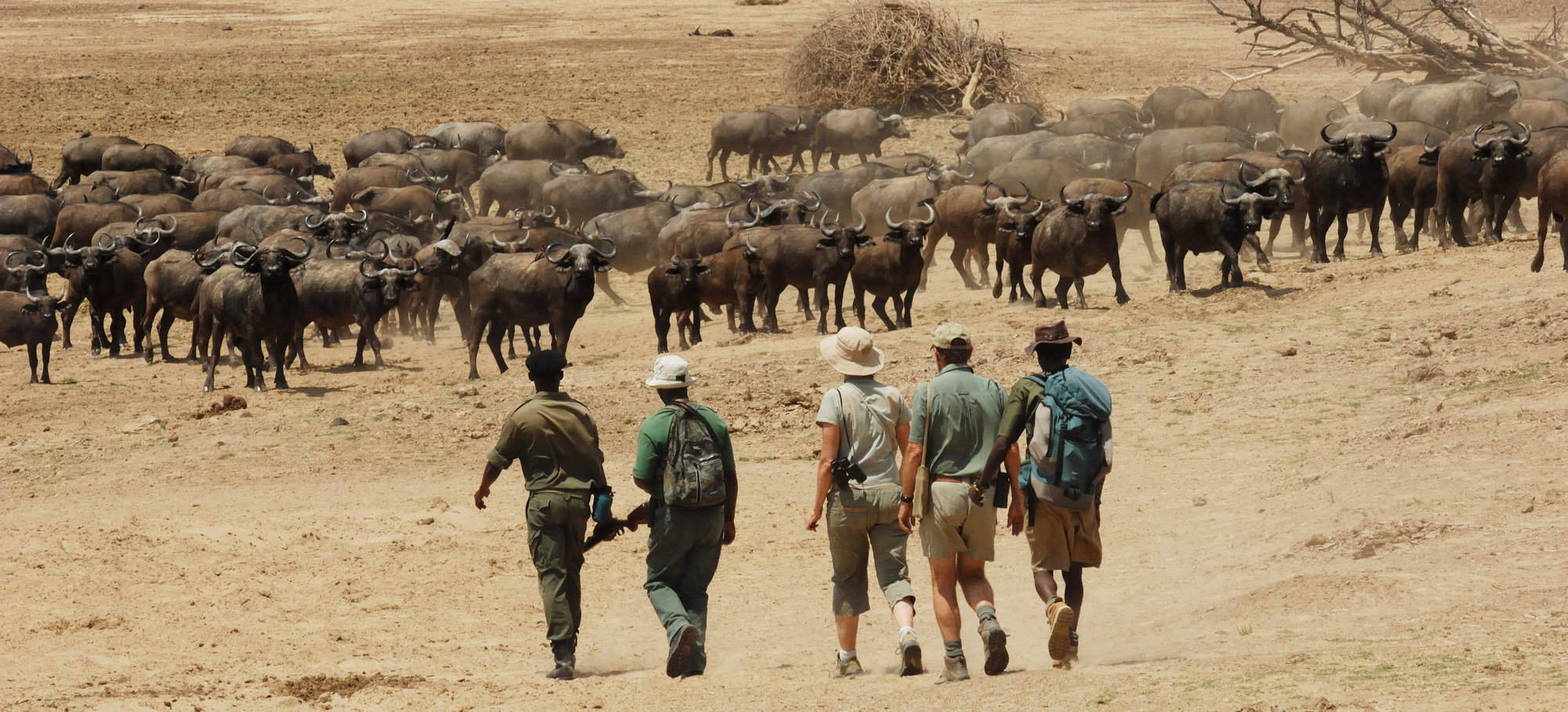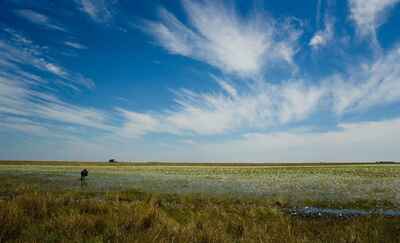
Remote and wild Liuwa Plain in western Zambia.
The park's first permanent camp open in 2017
...King Lewanika Lodge, in the heart of the park
Blue wildebeest on Liuwa Plains
Everyone adapts to the flood waters on Liuwa
Inquisitive hyenas approach the camp fire
Liuwa Plain National Park
Liuwa Plain National Park
Once the hunting ground of the King of Barotseland, Liuwa Plain remains wild and exclusive, underpinned by a truly remote setting.
Barely a decade ago, Liuwa was almost entirely expedition territory, requiring at least two sturdy 4WD vehicles – and the know-how to drive them. Mobile safaris were in on the act, but for others the park was almost off limits.
Now, with a permanent lodge, a trickle of new visitors can share in the secret. Transferred by helicopter from the outpost airstrip at Kalabo, they find themselves in a traditional yet luxurious safari environment where few outsiders have trod.
Wide, open grasslands define this isolated park, stretching to the horizon across some 3,660km2, the view broken only by the occasional tree-island.
As the rains build towards the end of each year, shoots of new grass attract herbivores in their thousands, making Liuwa home to one of the largest annual gatherings of wildebeest in Africa.
In their wake come huge herds of zebra and red lechwe, while hot on their heels are the predators. Lion, cheetah and spotted hyena: all are returning to the plains after years of poaching.
Here and there, dips in the ground create shallow pans where water may linger long after the rains, providing sustenance for animals that gradually dissipate as the land dries out.
Around the pans, water birds jostle for position with terrestrial wildlife. Storks, stilts, wattled and crowned cranes dominate the scene, their scavenging cousins never far away in anticipation of a tasty meal. With the number of species identified in the park nearing 335, Liuwa is a birder’s mecca.
No matter what your interest, exploration is dictated by the seasons: 4WD in the drier months, canoe and on foot as the plains are flooded. Perhaps it’s that very seasonality that – now more than ever – defines the timeless appeal of Liuwa.
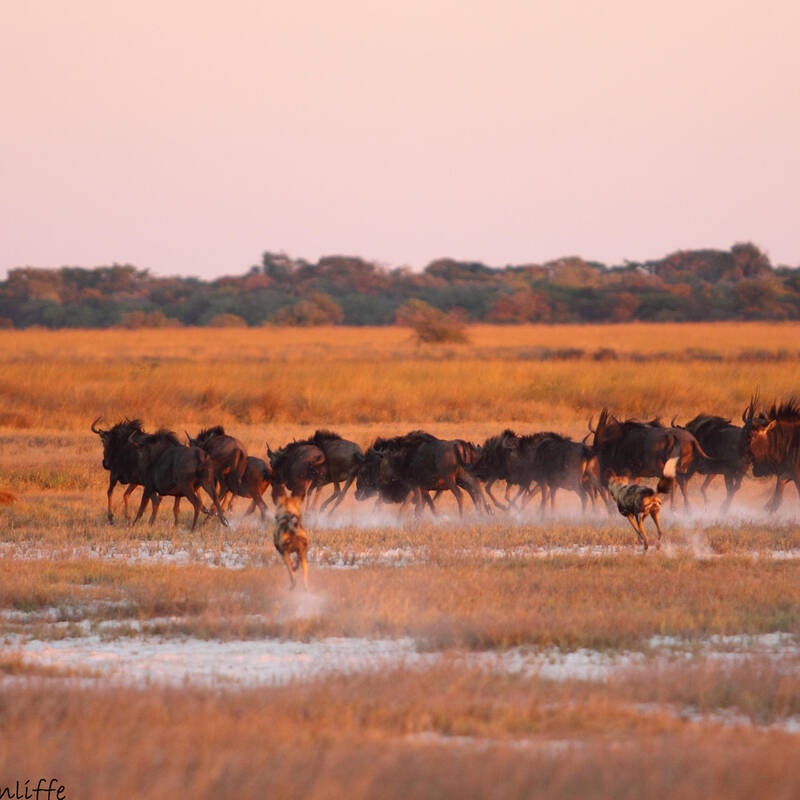
Safaris visiting Liuwa Plain
Just ideas, we'll always tailor-make a trip for you
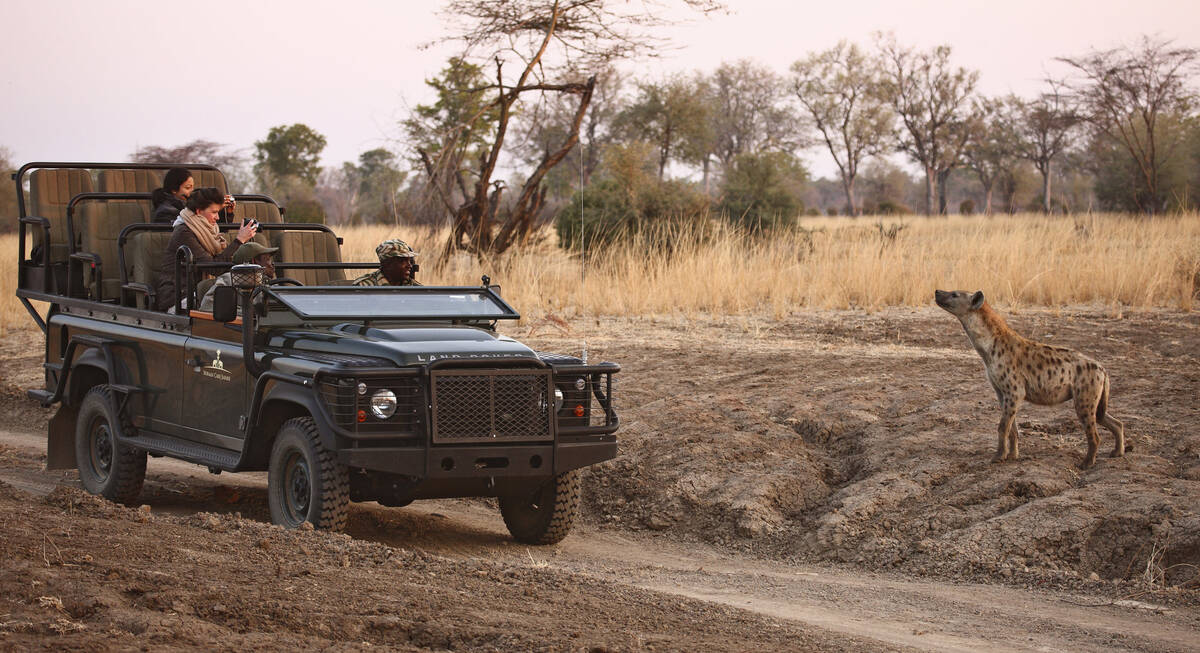
Puku Safari
11 days • 3 locations
LUSAKA AIRPORT TO LIVINGSTONE AIRPORT
Discover South Luangwa’s prolific wildlife before exploring the wildly remote pans of Liuwa Plain National Park and relaxing in one of the Livingstone area’s most romantic and exclusive hideaways. A safari of luxury, style and impressive diversity.
US$16,630 - US$19,920 per person
Most recent reviews of our safaris to Liuwa Plain
Click below to browse all 2 reviews from Liuwa Plain National Park. All from our travellers; all are in full & unedited.
Arrived 21 Oct 2021, 19 nights
"My Oct 2021 trip"
Overall rating: Excellent
Arrived 14 Nov 2019, 11 nights
"My Nov 2019 trip"
Overall rating: Excellent
Where to stay in Liuwa Plain
Our suggestions for safari camps in Liuwa Plain National Park
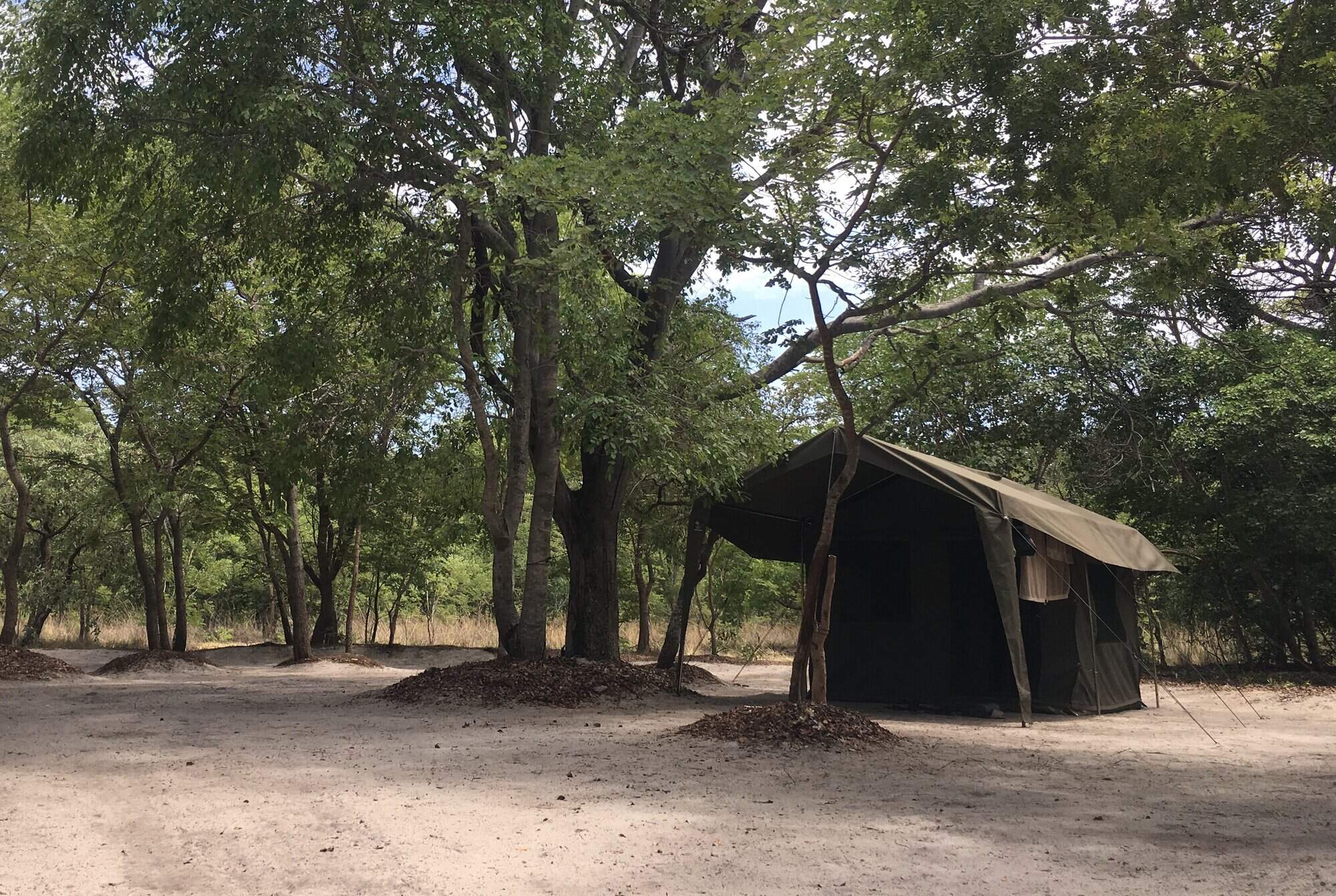
Liuwa Plains Mobile Safari
Liuwa Plains Mobile Safaris offer a remote and authentic safari adventure, into the heart Liuwa Plain National Park.
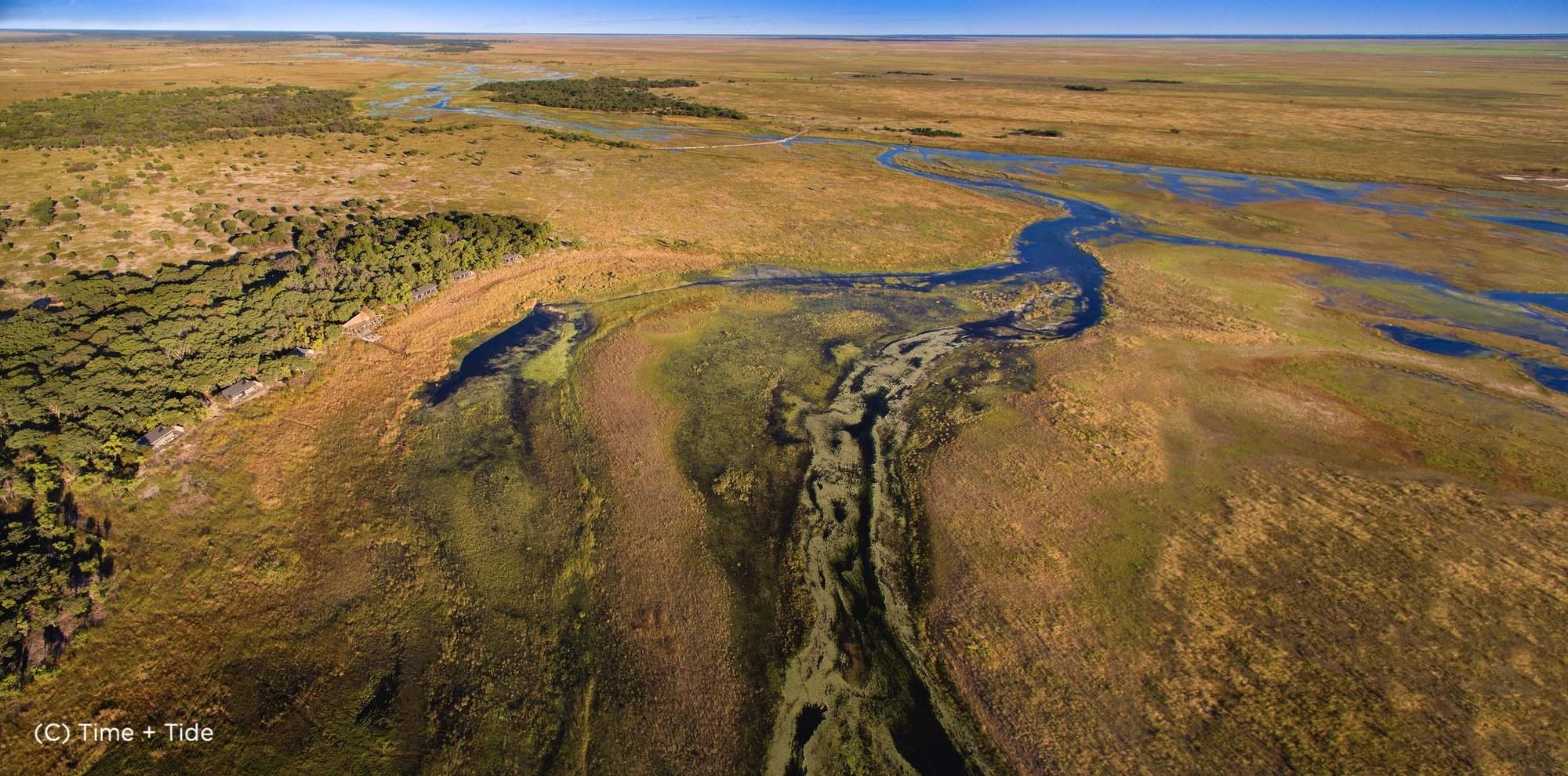
King Lewanika Lodge
King Lewanika Lodge, opened in 2017, is the only permanent safari camp in Liuwa Plain National Park.
Our travellers’ wildlife sightings in Liuwa Plain
This is their success for sightings in Liuwa Plain National Park. Click on a species for more detail. How we work this out.

100% success

100% success

100% success

100% success

100% success

0% success

0% success

0% success

0% success

0% success

0% success

0% success

0% success

0% success
When to go to Liuwa Plain National Park
Our month by month guide: What it's like to visit Liuwa Plain in Zambia
Jan
Feb
Mar
Apr
May
Jun
Jul
Aug
Sep
Oct
Nov
Dec
Liuwa Plain National Park in January
Liuwa Plain experiences its wettest period in January, with frequent heavy showers dominating most days. The mercury often soars above 30°C, accompanied by high humidity. The park's landscape transforms into a lush, emerald expanse of rampaging vegetation, with crystal-clear skies between downpours. However, the abundance of water causes wildlife to scatter, making sightings more challenging.
Many areas are inaccessible due to flooding, limiting exploration options. The park sees very few safari visitors, but a serene experience awaits any who can get here as large numbers of migratory birds flock to the area.
- Wet season peak, frequent downpours
- Lush grasslands, ideal for photography
- Wildlife dispersed, challenging to spot
- Access very difficult; lodges closed
- Amazing time for migrant cranes
Our view
This is not a great time to visit
Weather in January
Liuwa Plain National Park in February
The wet season in Liuwa Plain continues through February; dramatic thunderstorms punctuate otherwise sunny days. The national park remains awash with water, affecting wildlife distribution and accessibility.
Dense vegetation growth everywhere further complicates game viewing, but intrepid observers will be rewarded with unique sightings. The flooded plains create temporary waterways, offering distinctive boating opportunities in areas usually traversed on foot or by vehicle. Few safari visitors can get here at this time, providing an intimate experience of the park's raw beauty for those who can.
- Continuous rainfall, humid conditions
- Verdant landscapes, photogenic scenery
- Game viewing difficult due to thick vegetation
- Superb bird-watching opportunities
- Limited accommodation options
Our view
This is not a great time to visit
Weather in February
Liuwa Plain National Park in March
March marks the final full month of the rainy season in Liuwa Plain. Daily downpours persist, maintaining high water levels throughout the national park. Temperatures consistently exceed 30°C, with humidity levels remaining elevated.
The lush vegetation and difficult access continue to pose challenges for safari-goers, even though the wildlife viewing can be exceptional. Many species rear their young during this period allowing the Liuwa's predators to take advantage of vulnerable prey. As March progresses, clearer skies emerge, offering breathtaking photographic opportunities against vivid backdrops. Birdwatching remains excellent as migratory species prepare to leave on their seasonal journeys.
- Persistent rains, warm temperatures
- Flourishing flora, picturesque vistas
- Abundant newborns but elusive wildlife
- Virtually no visitors make it here
- Accommodation still closed
Our view
This is not a great time to visit
Weather in March
Liuwa Plain National Park in April
April heralds a transitional period in the national park: heavy rains give way to lighter, sporadic showers. Liuwa Plain retains its vibrant green hue as conditions for wildlife viewing begin to improve. Areas of the national park start to become less inaccessible as flood waters recede. However, many parts remain difficult to reach.
April offers a unique blend of the wet and dry seasons' characteristics, with the landscape slowly beginning its transformation. Animal behaviour and sightings gradually shift as the wildlife slowly adapts to the changing conditions.
- Rainfall tapering off, occasional showers
- Wildlife viewing slowly starting to improve
- Vibrant greenery, clear skies for photos
- Retains a fresh feeling with many dry days
- Travellers are a rare sight in Liuwa
Our view
This is not a great time to visit
Weather in April
Liuwa Plain National Park in May
May typically ushers in the dry season at Liuwa Plain. While occasional showers may still occur, most days are clear with sunny skies. Temperatures begin to drop, with daytime highs averaging around 26°C.
The park's landscape starts to dry out, improving accessibility and enhancing game viewing opportunities. As standing water diminishes, the proliferation of vegetation slows and some begins to die back a little. The air clarity remains excellent, benefiting photographers. Late May can see a small uptick in visitors as favourable conditions set in, though the park remains very quiet by any normal standards.
- Dry season onset, mostly sunny days
- Majority of accommodation options open
- Bush still green and lush, with clear air for photographers
- Wildlife sightings start to improve
- Last month for off-peak pricing
Our view
A good time to visit, with pros & cons
Weather in May
Liuwa Plain National Park in June
June brings reliably dry conditions to Liuwa Plain, with sunny days becoming the norm. Humidity levels plummet, and temperatures continue to decrease, often dropping to around 10°C at night while reaching 25°C during the day.
The park's vegetation is now thinning out a little, gradually enhancing the visibility of the wildlife. Wild dogs start denning; impalas are rutting. Smaller water sources become scarcer, wildlife sightings around remaining water bodies improve. The cooler temperatures make for comfortable daytime exploration of the park. The changing landscape offers an easier environment for viewing wildlife than the dense greenery of the wet season.
- Clear skies, cooler nights
- Improved visibility for wildlife spotting
- Park is largely accessible; good conditions for safaris
- Safari season starts
- Lodge rates still less than peak season
Our view
A very good time to visit
Weather in June
Liuwa Plain National Park in July
In July, Liuwa Plain's dry season is in full swing. Vegetation continues to recede, and water sources continue to shrink, leading to excellent wildlife viewing opportunities around those that remain.
Daytime temperatures hover in the 20s Celsius, but nights can become cold, dropping to single digits. Early morning and late evening game drives can be particularly chilly: bring warm layers, gloves and hats!
The national park sees an increase in visitors during this prime viewing season, though Liuwa remains less crowded than most other African parks. The landscape takes on a golden hue as grasses dry out.
- Pleasant days, chilly evenings
- Lovely time in Liuwa: landscape not yet parched
- Prime time for wildlife observation
- Excellent conditions for safaris
- Peak season rates in force
Our view
A very good time to visit
Weather in July
Liuwa Plain National Park in August
August in Liuwa Plain National Park offers very good game viewing conditions as animals congregate around dwindling water sources. Wild dog dens still active. The chance of rain is minimal, with consistently sunny days. A slight haze may begin to appear on the horizon due to dust and distant bush fires.
Nighttime temperatures are cold, dipping below 5°C, so come prepared; daytime highs reach the mid-20s Celsius. The golden landscape contrasts sharply with the wet season's lush environment. This is a popular month for visitors, attracted by the excellent wildlife sightings and comfortable daytime temperatures.
- Dry climate, warm days, cool nights
- Superb game viewing near water sources
- Optimal for walking safaris
- Puppies venturing out at wild dogs dens
- Peak season, premium rates apply
Our view
Fantastic: the very best time to visit
Weather in August
Liuwa Plain National Park in September
September is often considered the prime time to visit Liuwa Plain. Rainfall is rare, humidity is low, and temperatures begin to rise, with daytime highs typically in the low 30s Celsius.
Wildlife viewing is excellent as many animals cluster around the few remaining water sources. The wildebeest herds start appearing in the north of the park, and wild dog puppies are now mobile. The landscape is at its driest, providing a striking backdrop for photography, though some haze may affect long-distance views.
Despite being the park’s peak month for visitors, Liuwa Plain still receives relatively few visitors and retains a very exclusive feel.
- Hot days, mild nights, clear skies
- Exceptional month for wildlife encounters
- Landscape hazy due to dust
- Wildebeest starting to congregate in the north
- Wild dogs vacating dens and moving with puppies
Our view
Fantastic: the very best time to visit
Weather in September
Liuwa Plain National Park in October
October sees Liuwa Plain National Park at its driest and hottest. The landscape is parched, with little ground vegetation remaining. Daytime temperatures frequently soar above 40°C, rarely dropping below 20°C at night. These extreme conditions concentrate wildlife around the few remaining water sources, leading to exceptional game viewing opportunities.
The heat can be challenging for visitors, but visitors are rewarded with larger herds of wildebeest moving south on the plains. A haze often permeates the air, affecting long-distance visibility and photography.
- Parched landscape waiting for the rains
- Increasingly hot days and nights
- Peak wildlife viewing month
- Wildebeest migration heading south
- Hazy conditions may affect photography
Our view
A very good time to visit
Weather in October
Liuwa Plain National Park in November
November in Liuwa Plain is as unpredictable as the transition from dry to wet season. Temperatures remain high and humidity builds as the month progresses; then everything changes as the first proper rains arrive.
Early November can still offer excellent game viewing, as the spectacular wildebeest migration masses across the park's southern plains. Many animals disperse as the rains strengthen and water becomes more readily available. Visitors numbers plummet; those who can get here witness the dramatic change from brown to green as vegetation explodes.
- Wet season begins, hot and humid
- Wildebeest migration spectacle at peak
- Wildlife disperses as rains arrive
- Palearctic migrant birds here
- Many young animals are born
Our view
A good time to visit, with pros & cons
Weather in November
Liuwa Plain National Park in December
December usually sees Liuwa Plain in the midst of its wet season. Heavy thunderstorms may be a daily occurrence, interspersed with periods of sunshine. Daytime temperatures often exceed 30°C, accompanied by high humidity. The landscape undergoes a remarkable transformation, turning lush and green.
Game viewing is challenging as areas of the nation park become inaccessible due to flooding. Despite the challenges, the rain washes away dust and haze, revealing stunningly clear skies that provide excellent photographic conditions.
- Rainy season in full flow
- Verdant vegetation and everything feels alive
- Lush scenery, ideal for landscape photos
- Limited wildlife viewing opportunities
- Lodges are closed; very few visitors
Our view
This is not a great time to visit
Weather in December
Liuwa Plain National Park: In detail
A guide to Liuwa Plain National Park
The Liuwa Plains stand in the far west of Zambia; they are exceedingly remote and wild.
In our experience, the national park here is also one of the most amazing wildlife parks in Africa – it's certainly one of the least visited. At the right time of year, a safari to the Liuwa Plains can be as good as safaris ever get, and so whilst the cliché 'best kept secret' is applied with sickening frequency to many parts in Africa; Liuwa Plain is one of the few safari areas which really deserves it.
Plain or Plains – what's in a name? The flat, grassy plains in this area are called Liuwa Plains – although the national park is correctly termed: Liuwa Plain National Park.
Safaris to Liuwa Plains
Time + Tide Africa's newest camp is the luxurious King Lewanika Lodge. (This camp was given various names in the planning, but is now named after the Litunga - the paramount chief of this area!)
Trips to Liuwa Plain use scheduled flights departing from Livingstone in order to reach the park. The flight for Liuwa Plain departs early on Wednesdays and Saturdays, necessitating a one night stay in Livingstone beforehand. It's possible to fly via charter flight from Lusaka also, sometimes with a stop in Kafue National Park, a great add-on before or after your safari in Liuwa Plain.
History of Liuwa Plain National Park
In the Lozi language that is spoken all over western Zambia, the word 'Liuwa' means 'plain'. There's a local legend of how one Litunga planted his walking stick on the plains, where it grew into a large mutata tree. This tree can still be seen in the national park.
Geography of Liuwa Plain National Park
Within this huge open area, you'll find the occasional small tree-island, cluster of raffia palms, or open pan interrupting the flatness. Often you can look 360 degrees around you and see nothing but a level expanse. The environment is unlike any other park in Zambia – although connoisseurs of Africa's most remote corners will note that it some ways it's quite similar to Katavi National Park in Tanzania, or the much smaller Kazuma Pan in north-western Zimbabwe.
Much of these huge Liuwa Plains become flooded from around December to April. The waters are said to rise in the north, and spread south. This flooding drives the wildebeest migration, for which the park is famous; the herds move out of the woodlands to the north, and on to the open plains for new, fresh grazing.
In the centre of Liuwa Plains, and especially to the south of this enormous grassy plain, there are scatterings of flat, open pans. Many of which hold their water well into the dry season – and these are always worth investigating. They vary immensely; on any given day some will appear almost lifeless, whilst others host real concentrations of birds or antelope.
The last time Expert Africa visited Liuwa Plain National Park, we'd often drive for an hour and see nothing … only to chance upon a pan containing 200 pink pelicans. We'd continue seeing little for another 30mins, only to find a huge herd of lechwe, or four cheetah drinking beside another pan.
Wildlife of Liuwa Plains
Subsequent surveys suggest that game numbers were declined significantly towards the end of the 1990s and in the first few years of the 21st Century. By 2003 blue wildebeest numbers in Liuwa Plains were estimated at only 15,000. This decline was stopped with much more active protection thanks to the African Parks Network, which took on the park as one of its projects in 2003-4. They've spent a lot of time and money on conservation of the park, and the development of its surrounding communities since then – and this appears to have paid off. Liuwa's blue wildebeest are now estimated to number as many as 47,000, buffalo have been reintroduced and have formed a stable herd, and anecdotal evidence is that other species are also benefiting.
The largest herds seen in Liuwa Plain National Park are still the blue wildebeest which congregate here in their thousands, during the rains. Amongst them, you'll find zebra and tsessebe. Though widely regarded as a 'wildebeest migration', some suggest that it may in fact just be a gathering on the plain of all the game that has previously been in the surrounding bush, rather than an actual migration from, say, Angola. Regardless of this, if you can see it at the right time, then it's a stunning sight – flat, open plains with animals as far as the eye can see – just as remarkable as the more famous Serengeti wildebeest migration.
Liuwa's game has, from received wisdom, been regarded as best around November/December, and visitors have ignored the rest of the year. However, current thinking is that May/June time is just as amazing. Members of the Expert Africa team last visited towards the end of October, and the wildebeest were starting to congregate in their masses and calve around the southern end of the park, a spectacular sight. However, visits during earlier months a few years previously still yielded sightings of plenty of wildebeest on Liuwa Plains, including one herd of over a thousand; plus several smaller herds of zebra, tsessebe and red lechwe, one of the latter numbering over 120 individuals; and some of the most spectacular birding that we'd ever seen in southern Africa.
Predators are also well-represented in Liuwa. Lion, leopard, cheetah, wild dog and hyena all occur here. Liuwa's prides of lion, which blend superbly into the golden grass, previously had a reputation for aggression and even for charging vehicles, though on our previous trip they were very relaxed, drinking at and sleeping next to one of the pans while we watched on.
Leopard do occur within the national park, though the surrounding forest is a better habitat for them than the plain itself. Hyenas are fairly commonly seen, and are cheeky enough to come to the edge of your firelight's glow, or to take a nibble of the safari vehicles tyres when you stop to watch. Buk's survey of wild dogs (see Further Reading) suggested that in 1993–4 the size of the packs was larger than average – and recent sightings have confirmed that wild dog numbers here are recovering well. Cheetah are also thought to be returning and flourishing in the park as it recovers.
Birds found in Liuwa Plain National Park
Visiting as we have, in the dry month of October, the birding was amazing. We saw spectacular groups of crowned cranes often numbering several hundred birds; numerous pairs and smaller groups of up to 30 wattled cranes, which are so endangered in many places; and a flock of several hundred pelicans. We saw all of these in just a few days in late October – and so when it rains, we'd expect Liuwa's birding must be quite unbelievable.
Then, when the pans fill up, yellow-billed, open-billed, saddle-billed and marabou storks arrive, with grey herons, spoonbills, egrets, three-banded and lots of blacksmith's plovers, spur-winged and pygmy geese, and many other water birds. Slaty egrets are seen in groups, a rare occurrence elsewhere.
Secretary birds and Denham's and white-bellied bustards are common; and the park is noted for large numbers of the migrant black-winged pratincoles, a finely-marked swift-like bird which is rare further east. Other 'special' birds in Liuwa Plain here include the pink-billed and clapper larks, swamp boubou, rosy-breasted longclaw, sharp-tailed starling, long-tailed widow and white-cheeked bee-eater. Liuwa Plains is also a great area for raptors from the greater kestrel to bateleur and martial eagles, palmnut vultures and fish eagles. Pel's fishing owl is found along Luanginga River to the south and the Luambimba River in the north. The park is also home to grey crowned cranes, recently classified as endangered due to population declines elsewhere.
Seasons in Liuwa Plains
However, around May-July the plains dry up, the waters recede northwards, and gradually the herds move that way also. They desert the waterholes of the southern side of the plain, and move back northwest, eventually melting back into the woodlands which surround the park. Plenty of resident wildlife remains, relying on a scattering of pans which retain their water for most of the year.
From August to October the herds start drifting southwards again. At first, in September, you'll find just a few herds, typically just a few hundred wildebeest, venturing south on to the northern areas of the plain – but gradually as the rains approach these increase in number and move further south into the park.
In November and December the first rains are falling, and then Liuwa Plains are teeming with game. November is classically the best time to visit the park – a balance between catching the best of the game, and yet avoiding any danger of getting permanently stuck in deep mud.
For those who are feeling more adventurous, the park is accessible through January to April, and walking and canoeing are both on offer.
Map of Liuwa Plain National Park
Choices for where to stay in Liuwa Plain National Park
Liuwa Plain National Park: Safaris

Puku Safari
11 days • 3 locations
LUSAKA AIRPORT TO LIVINGSTONE AIRPORT
Discover South Luangwa’s prolific wildlife before exploring the wildly remote pans of Liuwa Plain National Park and relaxing in one of the Livingstone area’s most romantic and exclusive hideaways. A safari of luxury, style and impressive diversity.
US$16,630 - US$19,920 per person
2 lodges in Liuwa Plain National Park
Even though the area of the Liuwa National Park is remote, the park has one permanent lodge open to visitors, which has been an exciting development for the park. With the advent of flights between Lusaka and Mongu in 2011, and scheduled flights to Kalabo in recent years, access to this area has improved.

Liuwa Plains Mobile Safari
Liuwa Plains Mobile Safaris offer a remote and authentic safari adventure, into the heart Liuwa Plain National Park.

King Lewanika Lodge
King Lewanika Lodge, opened in 2017, is the only permanent safari camp in Liuwa Plain National Park.

Looking for inspiration on where to travel next?
Visit our trip chooser to explore your options and find inspiration for your perfect African adventure
Inspire me